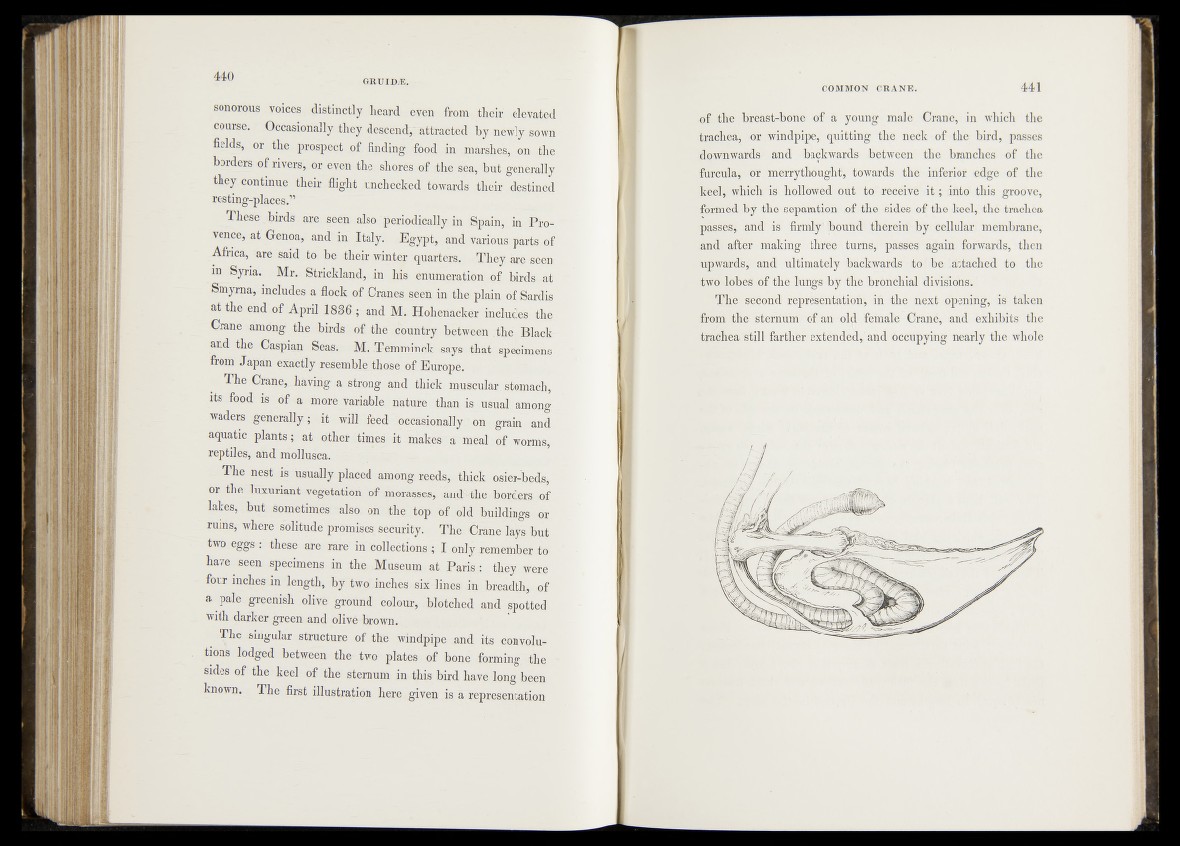
G R U Ip E .
sonorous voices. distinctly heard eyeh from their s$dpated
course. Occasionally they descend^ attracted by newlj^jjpwn
fields, rof; the prospect of finding, food in .marsheWoji th i
borders of rivers,, or even--the shores of the. sea, but-generally
they continue their flight unchecked towards d ^ in ^ d
resting-places,”
These. birds are, seen-also "periodically in %ain, in Pro-
vence, at Genoa, and" in Italy, , Egypt, and-yarjojis,'-parts of
Africa, are said.to .be their winter quarters, dljhey arsg §peu
in Mr. Strickland, in his enumeration' ».of- birds „ at
Smyrna, includes a flock of Cranes seen in 'the plain ^ S a rd is
at the end of April 1886; and M. Hohenackër in c fed ^ th e
Crane among the birds of the cotinfry bet^e^n .the Black-
and the Caspian Seas. M. Temminck s&ys that specimens
from Japan exactly resemb]e;tÖ;è|l)f Europe.
The Crane,, having a strong and thick jqajjgcul.ir |u
its food is of a more variable nature than ist-n>jial among
waders generally-; it will feed occasionally# bit- grain and
aquatic plants; at other times it .makes- a meal pf worms,
reptiles, and mollusca.
The nest is usually placed among reeds, thick nsier^ds*
or the luxuriant vegetation .of morasses, anclHhe borders .-of
lakes, but sometimes also on the top of.old buildings, or
ruins,- where solitude promises, security. Thel cSnedays but
two eggs : these are rare in. collections ; I onIyiememfrfe£do
have seen specimens in the Museum at Paris : they were
four inches in length, by twqlinches six lines in breadth, of
a pale greenish olive ground colour, blotched and spotted
with darker green and olivè-brown.
The singular structure óf the windpipe and its convolu-
tions lodged between the- two* plates of bone forming the
sides o f the keel * of the sternum in this bird have long been
known. The first illustration here given is a representatioq
COMMON CRANE. 4 4 1
of-the ‘breast-bone of a young male Crane, in which the
trachda,* *or windpipe? quitting the neek of the bird, passes
fidwnwards’; And backwards between the branches of the
or m<er$^hllfghtf«towards the inferior edge of the
Ifljbe^'whaeh-is hollbwgd 1©’ receive >it; into this groove,
formc$3?b<v &e scpg£r-at^.,®%'jof dhfjff ides of the keel, the trachea
Spr^Hc55,1 and||^fs: firmly’©bun®. Jljlreih by cellular membrane,
and after making Ipppl turns,- passes again forwards, then
upwards^’and dr&ckwards1 toT be 'attached, to the
jtwo^lwcs' of tlI*e$un||sM|7t<]i£fr$cg^c^Ial divisions.’
n'Tl^^onc^'roprcs^featiw^dh.t&e/'jnext opening, is taken
from ftb#’iiternum di^Rn^kb fel&alSs1 Crane,, and exMMts the
-trachea4 'still farther je^ehd^d,'aijd -occupying nearly the whole